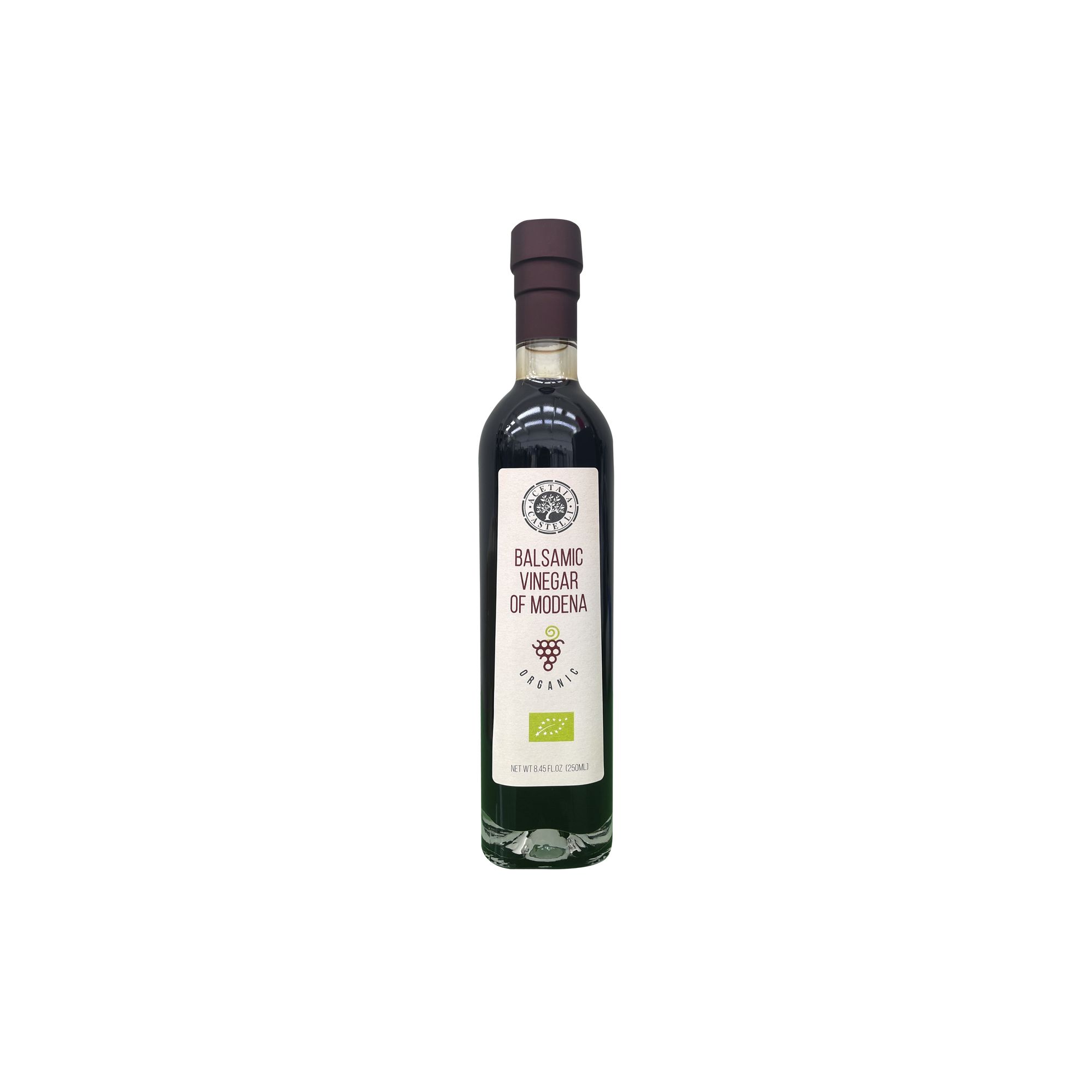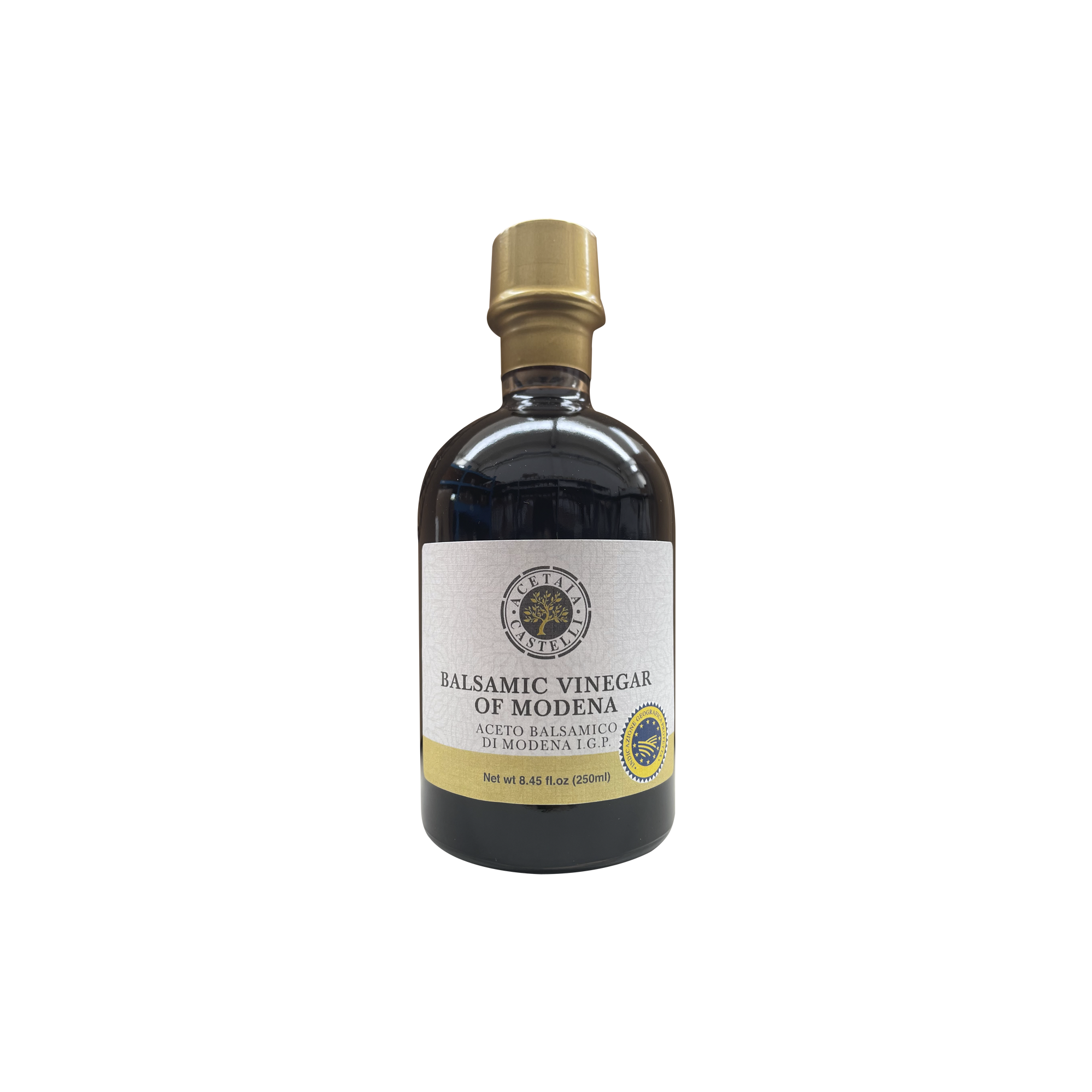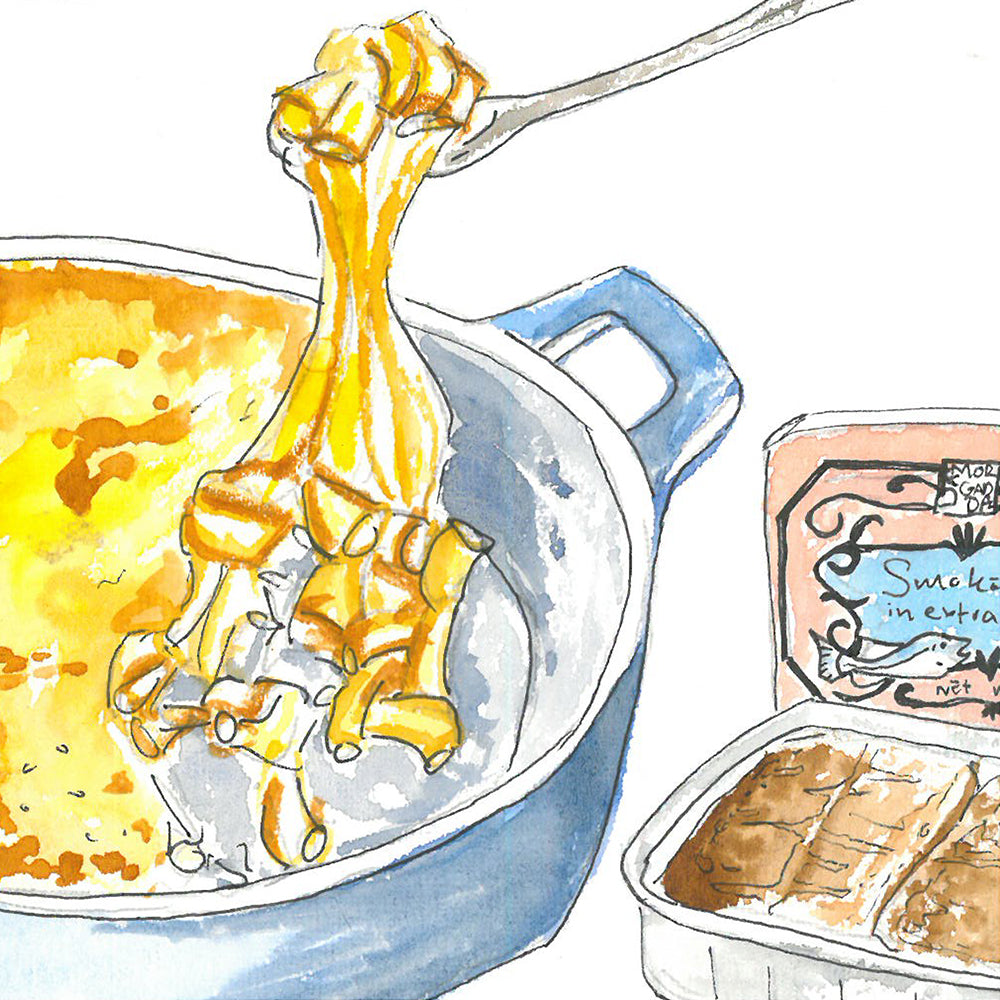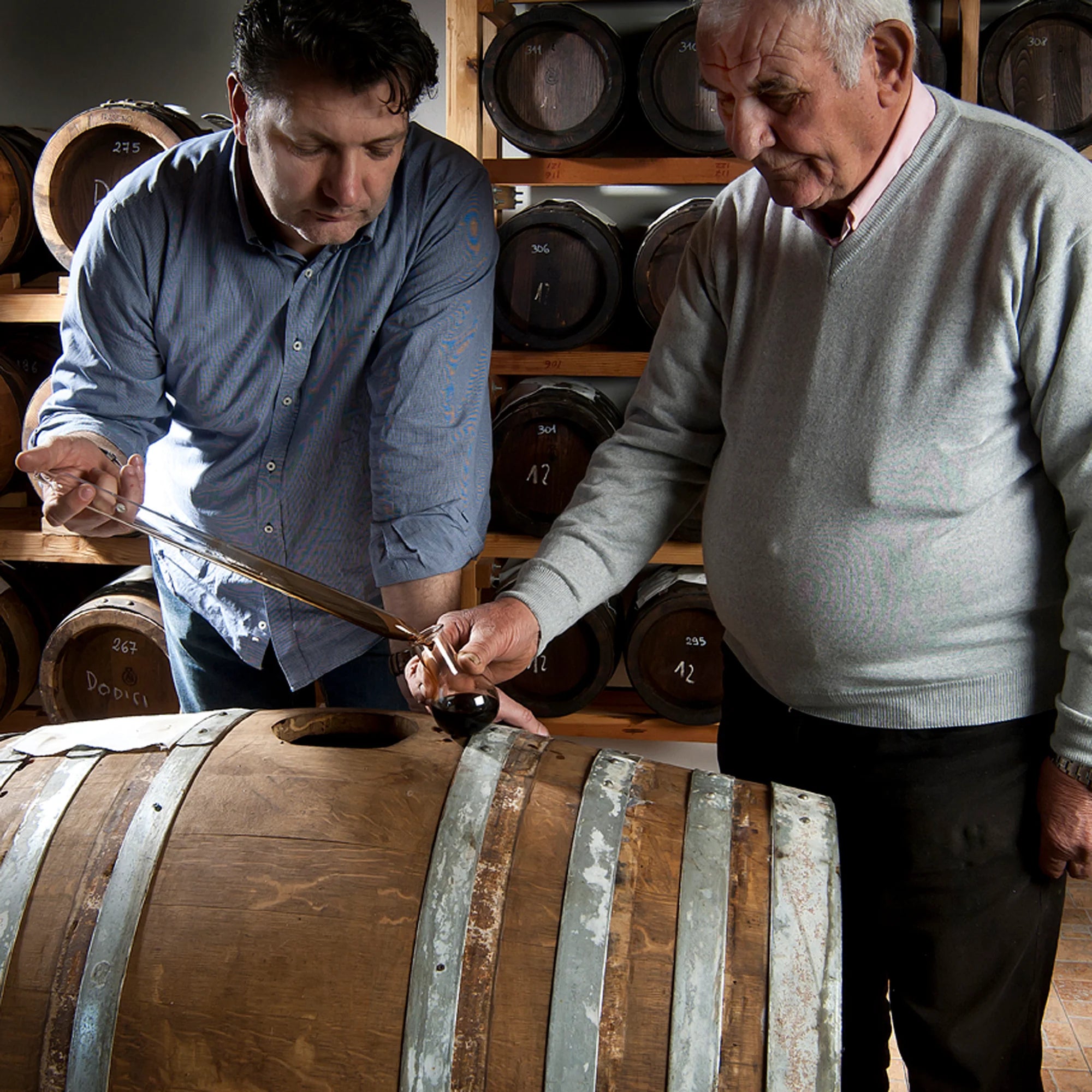Balsamic vinegar, with its rich history and complex flavours, has emerged as a staple condiment in kitchens around the world. Yet, not all balsamic vinegars are created equal. A stark distinction exists between traditional balsamic vinegar, often referred to as Aceto Balsamico Tradizionale, and the more readily available commercial varieties found on supermarket shelves. In this exploration, we embark on a journey to understand the differences, unravel the origins, and appreciate the unique qualities that set these two categories apart.
Heritage Rooted in Tradition
The Production Process: Traditional Balsamic Vinegar
The origins of traditional balsamic vinegar can be traced back to the heart of Italy, where it emerged as a testament to craftsmanship and heritage.
Dating back to ancient Rome, where the use of grape must for preservation and flavor enhancement was commonplace, the foundations of balsamic vinegar began to take shape. Over time, this practice evolved into a meticulous process of transforming grape must into a precious condiment.
The technique of crafting traditional balsamic vinegar is deeply intertwined with the agricultural rhythms of the region. Local grape varieties, predominantly Trebbiano and Lambrusco, form the backbone of the process. The harvested grapes are crushed to create must (freshly crushed fruit juice that contains the skins, seeds, and stems of the fruit), which is then cooked over an open flame to concentrate its flavours. This cooked must is then transferred to a series of wooden barrels, each made from different types of wood, such as oak, cherry, juniper, and chestnut. Here, the vinegar undergoes a slow and patient aging process, absorbing the essences of the wood and developing its distinctive character over the course of years, if not decades.
The ageing process of traditional balsamic vinegar sees the grape must transferred to a series of progressively smaller wooden barrels, absorbing the nuances of the wood and developing its complex flavor profile. Traditional balsamic vinegar is a product of time and patience, and only after a minimum of 12 years, can it be considered ‘young’, while the esteemed ‘extravecchio’ designation is reserved for vinegars aged over 25 years!
Production Process: Commercial Balsamic Vinegar
The evolution of balsamic vinegar making took a significant turn during the 19th century as industrialization and changing consumer demands began to shape culinary practices. Seeking to capture the essence of the beloved traditional product on a larger scale, producers experimented with methods that would allow them to meet the growing appetite for balsamic vinegar, fast.
The late 19th and early 20th centuries saw the rise of vinegar-making techniques that aimed to replicate the flavours and viscosity of traditional balsamic vinegar in a more efficient manner. Vinegar houses and producers started using techniques such as blending, aging in larger barrels, and the addition of sweeteners to achieve a product that resembled traditional balsamic vinegar but could be produced in larger quantities and at a faster pace.
The commercial method for producing the coveted product on a grander scale involved (and still involves) taking a wine vinegar or concentrated grape must and combining it with caramel colouring, sweeteners, and other additives to mimic the complexity and viscosity of traditional balsamic vinegar. The resulting product is then typically aged for a significantly shorter period than traditional Balsamico, its maturation period lasting anywhere from a few months to a few years, before being bottled and made available to purchase.
And while commercial balsamic does lose some of the magic contained within the traditional potion there is something to be said for wider availability, and the versatility of products made to satisfy commercial tastes.
Taste and Complexity: Traditional
Traditional balsamic vinegar is renowned for its complex and harmonious flavor profiles, which are developed through the aforementioned aging process that transform grape must into a rich culinary nectar. Two of the most prominent grape varieties that lend their unique flavours to finished balsamic vinegar are Trebbiano and Lambrusco.
Trebbiano grapes, sometimes referred to as ‘Ugni Blanc,’ depending on the region, are a staple in traditional balsamic vinegar production. These white grapes bring a delicate sweetness and a mild acidity to the vinegar. Trebbiano’s floral and preserved and intensified during the aging process, adding layers of complexity to the final product. As the grape simmers and reduces, the Trebbiano’s inherent sweetness matures into a rich caramelized character, offering a balanced contrast to the vinegar’s tangy undertones. This sweetness harmonizes with the deeper, earthy flavours that develop during the aging process, creating a nuanced and captivating taste profile.
On the other hand, Lambrusco grapes, primarily known for their use in sparkling red wines, contribute a dynamic depth to traditional balsamic vinegar. These dark-skinned grapes offer a robust and intense flavor profile with hints of dark berries, plums, and a subtle spiciness. The Lambrusco grape's naturally bold and slightly tannic nature infuses the vinegar with a touch of complexity and structure. Through aging in wooden barrels, the Lambrusco grape imparts a subtle oaken essence that complements the vinegar's inherent sweetness and acidity.
During the aging process, traditional balsamic vinegar undergoes a metamorphosis that sees its flavours meld and mature. Trebbiano's sweetness and gentle acidity intertwine with Lambrusco's robust fruitiness
and tannins, creating a balance that is both harmonious and complex. The end result is a luscious blend with layers of flavor that range from honey-like sweetness and rich caramel to deep fruitiness and subtle woody undertones.
The marriage of these two grape varieties in traditional balsamic vinegar is a testament to the artistry and craftsmanship of Italian vinegar makers.
Flavor Profile: Commercial
Although made using a faster and more industrialized process, commercial balsamic vinegar still manages to pack a punch with flavourful notes that compliment countless dishes.
Sweet and tangy varieties, the most popular among commercial balsamic vinegars, contain notes of dark fruits like figs and raisins, the marriage of acidity and sweetness perfect for quick salads and toothsome marinades. But should one want to take their flavour profiles a step further, there are also commercial varieties that offer fruity and citrusy tasting notes that can enliven seafood with a piquant pinch of orange and lemon.
Taking these tasting notes a step further one can create greater depth in delicious dishes by calling upon botanical, fruit infused, and smoked balsamic vinegars. These respective notes of thyme, basil, and rosemary are perfect for bruschetta and savoury sauces while the sweetness of strawberries and blackberries, and the relish of oak smoked balsamic imbue meats and cheeses with complexity and character.
When it comes to taste profiles of traditional and commercial balsamic vinegars, there are applications for every variety.
Labelling and Regulations: Traditional Balsamic Vinegar
Labelling regulations for traditional balsamic vinegar are meticulously defined to preserve the authenticity, quality, and heritage of cherished condiment. Traditional Balsamic Vinegar of Modena (Aceto Balsamico Tradizionale di Modena) and Traditional Balsamic Vinegar of Reggio Emilia (Aceto Balsamico Tradizionale di Reggio Emilia) are two esteemed designations that carry a legacy of centuries-old craftsmanship. In order to safeguard their integrity, stringent guidelines govern how these products can be labelled and marketed.
The European Union's Protected Designation of Origin (PDO) status is the cornerstone of these regulations, ensuring that traditional balsamic vinegar originates from specific regions and adheres to traditional production methods. For Traditional Balsamic Vinegar of Modena, the labelling rules demand that the product must be exclusively crafted in the province of Modena, Italy. Similarly, Traditional Balsamic Vinegar of Reggio Emilia must be produced solely in the province of Reggio Emilia. This geographical limitation ensures that only authentic products with deep-rooted ties to these regions bear the coveted labels.
Furthermore, the labelling process for traditional balsamic vinegar is guided by an aging system that categorizes the product into different levels, each reflecting the aging duration and quality. The labels "Affinato" and "Extravecchio" denote different stages of maturation, with Extravecchio signifying the highest level of quality and aging. These designations communicate to consumers the richness and depth of flavours they can expect from each bottle.
In terms of bottle shape and design, the regulations are also precise. Traditional Balsamic Vinegar of Modena is bottled in distinctive bulb-shaped glass containers known as "Giugiaro" bottles, which are specifically designed to protect the vinegar from light and air, ensuring optimal preservation. These bottles, bearing the Consortia seal, become the hallmark of authenticity. Traditional Balsamic Vinegar of Reggio Emilia follows a similar path, using distinct bottle designs to signify the product's origin and quality.
To enhance consumer confidence, the labelling of traditional balsamic vinegar must adhere to specific language and information requirements. The label must clearly state the PDO status, the region of production, and aging classification. Additionally, the labels may display a unique numbering system issued by the Consortia, which adds a layer of traceability and accountability. This numbering system is linked to the individual producer, reinforcing the authenticity of the product.
In recent years, there has been growing concern over imitation and counterfeit products. To address this challenge, labelling regulations emphasize the importance of safeguarding traditional balsamic vinegar from fraudulent practices. Counterfeit products often fail to meet the stringent aging requirements and quality standards, threatening the reputation of genuine traditional balsamic vinegar. Stringent labelling regulations, combined with the PDO status and the active involvement of regional Consortia, work together to combat these fraudulent attempts and ensure that consumers receive authentic products.
Labelling Regulations: Commercial Balsamic Vinegar
Well, I could rattle off generic labelling regulations for commercial food products. Or, we can just all agree that commercial balsamic vinegar is trying its best.
Yeah, let’s just say it’s trying its best.
Conclusion: Balsamic Vinegar Today
In today’s market and culinary climate, balsamic vinegar continues to hold a prominent and revered position. Renowned for its rich and complex flavor profile, balsamic vinegar has evolved beyond a mere condiment to become a gourmet staple with diverse applications. Its versatility has evolved from enhancing salads and meats to adding depths to desserts and cocktails. Its applications are endless, and thanks to the creativity and ingenuity of chefs and mixologists and culinary ingénues, these applications continue to expand.
And with this increased interest in the quality and authenticity of gourmet creations, traditional balsamic vinegar has only become more sought after by conscientious culinarians. The sweet elixir has found its way into the homes of those using a keen eye for origin and production, studying the label for the most nuanced flavours and meticulous methods.
Furthermore, sustainability and ethical production practices have gained importance in today's market. Consumers are showing interest in balsamic vinegar brands that prioritize environmental responsibility and support local communities. This shift reflects a broader trend in the food industry, where consumers are seeking products that align with their values.
Taking these points for the staying power of traditional balsamic, and contrasting them to the emergence of at home cooks, and we being to see also the importance of commercial balsamic vinegar. The commercial blends might not have the same nuance and depth of traditional balsamic vinegar, but there is something to be said for getting people into kitchens, cooking, and discovering the joys of flavor.
We have recounted the emergence of both varieties and the difference that set them apart. But perhaps the most important thing is to realize that without one, the other begins to pale. How could we appreciate true craft if there was not a simplistic alternative, and how could we make the leap to greater heights without first having the necessary steps to take us there.
Balsamic vinegar comes in many flavours and appearances, but the most important thing is to discover the joy of delicious food, and sharing that joy with those you care about.







